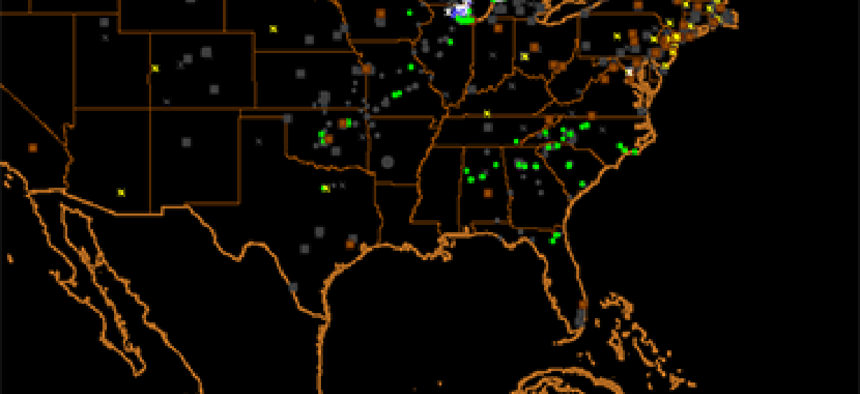Crowdsourcing the weather

NOAA's mobile app allows users to report precipitation in real time to improve forecasts.

The online display for NOAA's Precipitation Information Near the Ground app shows what's happening around the country as reported by users.
The National Oceanic and Atmospheric Administration is crowdsourcing the weather.
The agency’s National Severe Storms Laboratory (NSSL), in partnership with the University of Oklahoma, has launched a free mobile application called mPING that allows users to anonymously report precipitation from their locations via any mobile Apple or Android device.
A user can open the app and share what sort of precipitation is falling. That information -- including the user’s location and time -- joins tens of thousands of other observations in a real-time database as part of a nationwide research project called Precipitation Identification Near the Ground (PING). See the data as it comes in.
All reported observations -- past and present -- are available in the PING database. That has many implications, the least of which might be that mPING users no longer have to trust the weatherman. They can open the app and see whether they’re going to need an umbrella or not.
"mPING gives the public a unique opportunity to act as citizen scientists, allowing them to report their observations of precipitation -- such as snow, rain, ice pellets or a mix -- in real time," said principal investigator Kim Elmore, a research meteorologist at NOAA’s Cooperative Institute for Mesoscale Meteorological Studies at the University of Oklahoma.
"Because this nationwide information will be instantly available from one website, we believe it will be useful for not only researchers, but a variety of groups, including students and teachers, forecasters, TV meteorologists, members of the transportation and aviation industries, city managers, and law enforcement,” Elmore said.
Researchers at NSSL and the University of Oklahoma compare observations collected in the mPING database against existing radar and environmental data in an effort to develop the Winter Surface Hydrometeor Classification Algorithm -- predictive analytics that could improve weather forecasts, especially with regard to precipitation.
Current dual-polarization Nexrad devices cannot detect precipitation at ground level, except for locations very close to radar centers. PING data has the potential to fill those gaps.
“We want to be able to generate a diagnosis that gives somebody an idea of what will actually fall at a location at a given time, even if there isn’t an observer present,” Elmore said. “We want to do a better job of diagnosing what form of precipitation you’ll get.”
The PING project launched the mobile app on Dec. 19, 2012. The project was initially funded in 2006 by a grant from NOAA’s High Performance Computing and Communications Office, with subsequent funding from the NSSL director’s discretionary fund and through the Federal Aviation Administration’s Aviation Weather Research Program funding of the Advanced Weather Radar Techniques product development team.
Mobile users have uploaded 95 percent of the 44,500 observations reported since the app became available, Elmore said, adding to the tens of thousands of observations the program collected via manual Web inputs in the past seven years. He added that the mobile apps were a “dirt-cheap” effort -- the first iOS version was developed for free by a University of Oklahoma graduate student -- considering the impact improved weather forecasts could have.
“Weather is everywhere, every day,” Elmore said. "We can’t change it, but we can help manage the impact."
Users can report precipitation by a variety of defined types: rain, hail, freezing rain, drizzle, freezing drizzle, snow, wet snow, sleet, snow grains or no precipitation at all. In addition, they can report the size of hail during summer months. They cannot, however, report the intensity with which precipitation is falling due to differences in how people estimate those measurements.
“The more observations, the better,” Elmore said.






